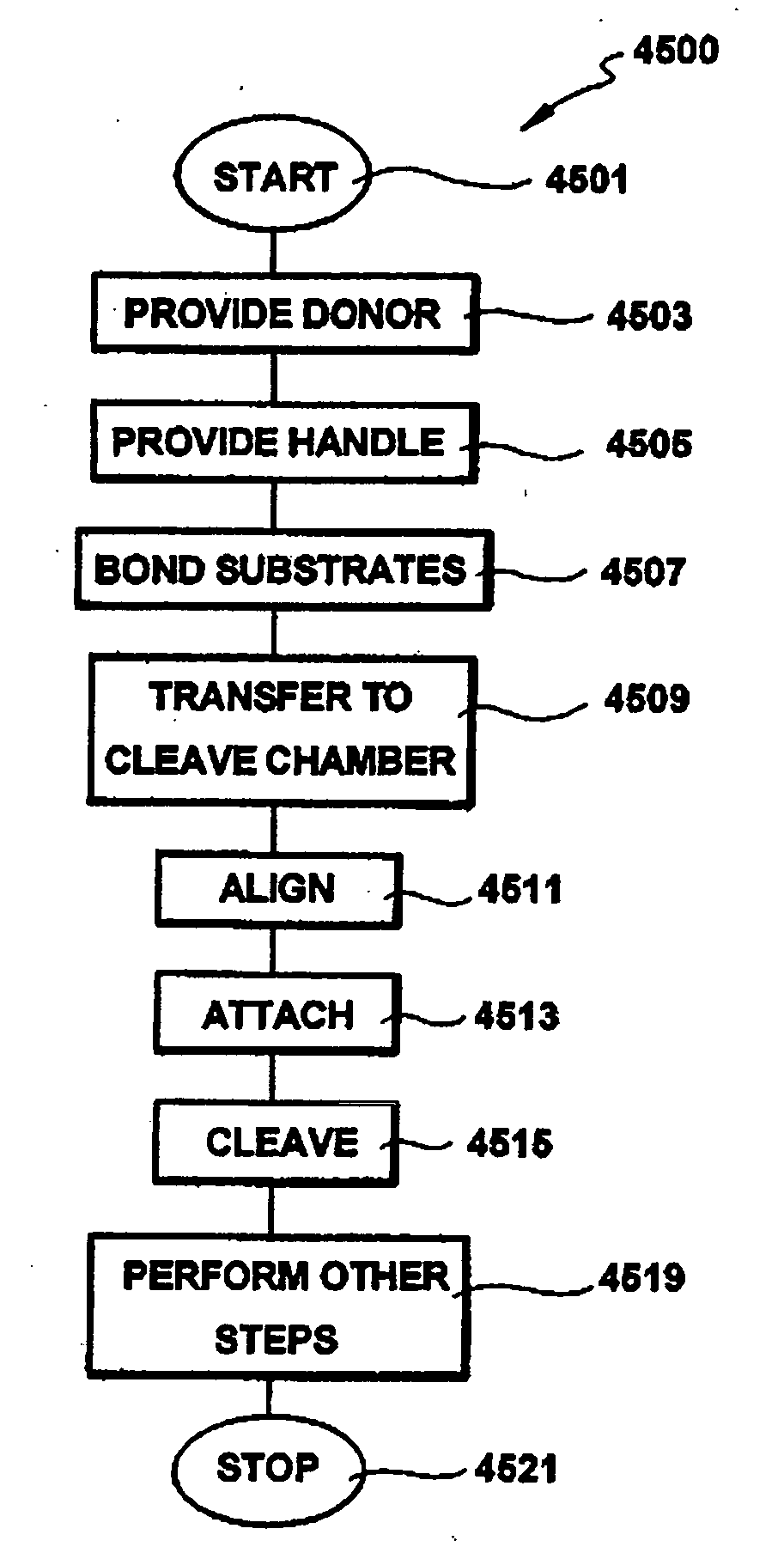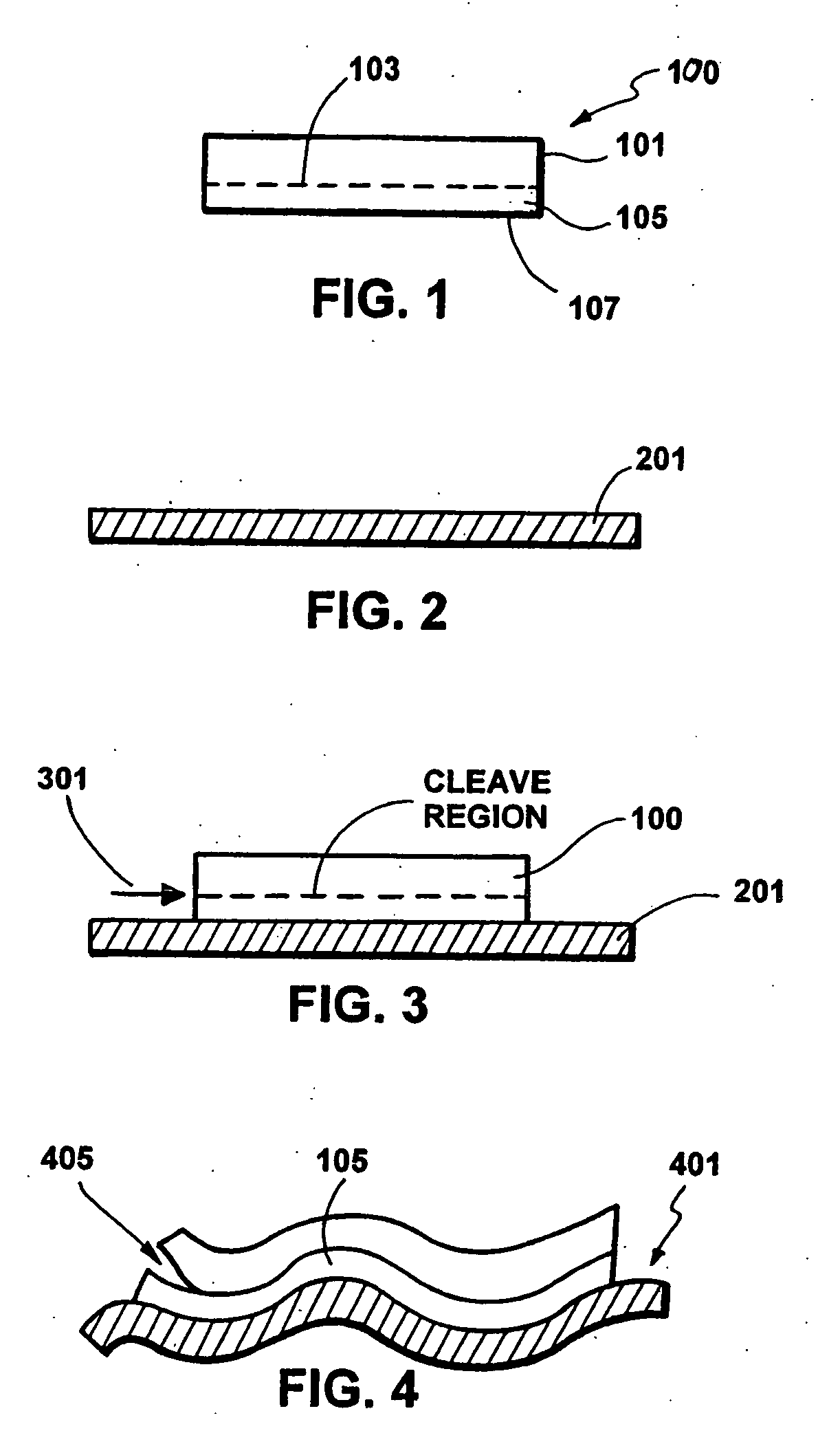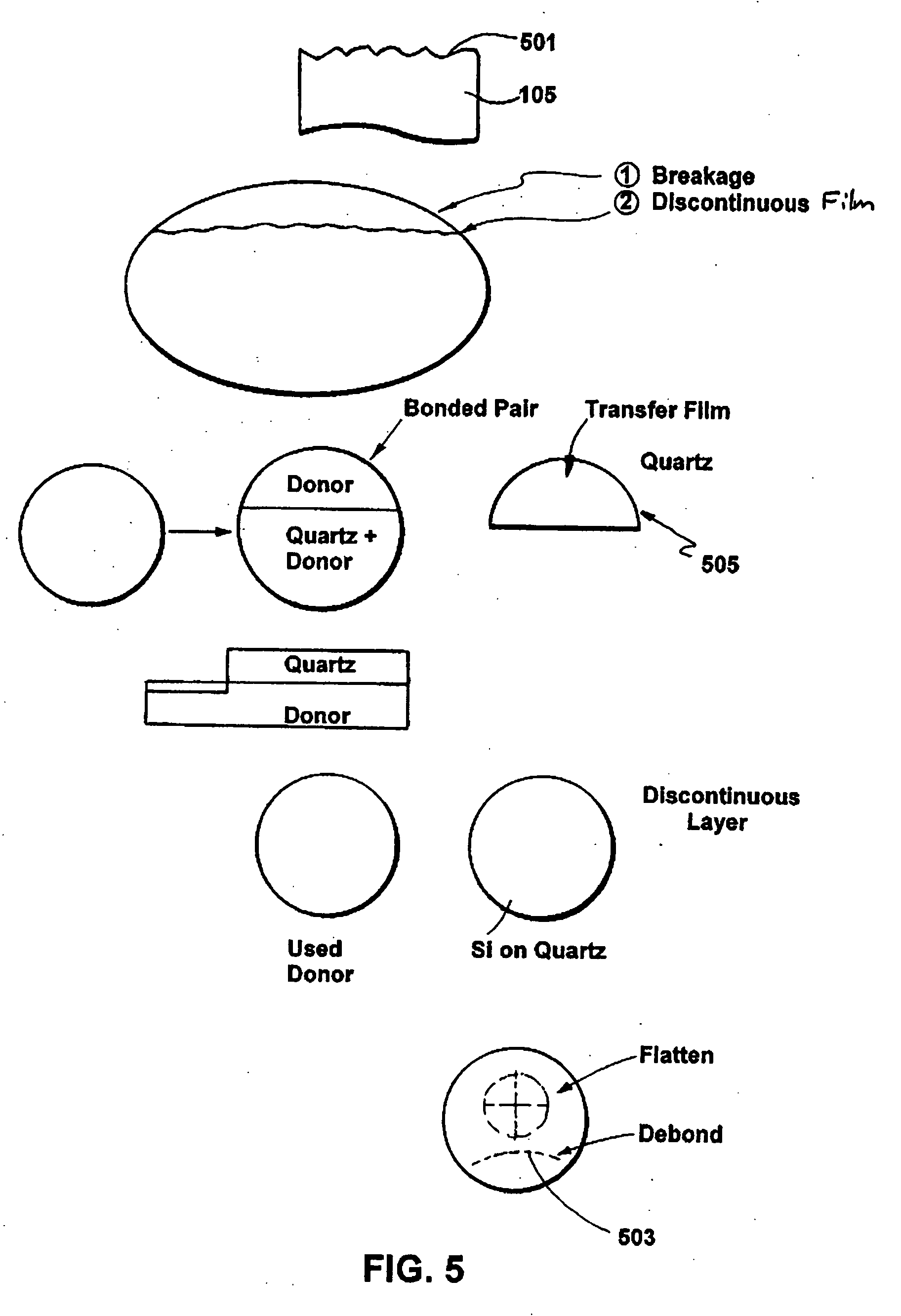Substrate stiffness method and resulting devices for layer transfer process
a technology of layer transfer and substrate, which is applied in the manufacture of microstructured devices, semiconductor devices, electrical equipment, etc., can solve the problems of difficult to achieve the effect of separating or cutting extremely hard and/or brittle materials, and achieving the effect of maintaining the effective deflection characteristic, suitable deflection characteristic, and effective deflection
- Summary
- Abstract
- Description
- Claims
- Application Information
AI Technical Summary
Benefits of technology
Problems solved by technology
Method used
Image
Examples
examples
[0235] To prove the principle and operation of the present invention, we performed various experiments using certain calculations. These experiments are merely examples, which should not unduly limit the scope of the claims herein. One of ordinary skill in the art would recognize many variations, modifications, and alternatives. Referring to FIG. 48 through 50, we have provided an example using a silicon substrate 4801, a quartz substrate 4803, and a backing layer 4905, which is called the “added layer.” As also shown, a cantilever of length, L 4807, operated upon by an end force, F, should have a deflection given by:
Deflection=F*Lˆ3 / (3*E*I) Equation 1
[0236] where F is the force operating at the cantilever end;
[0237] where I is the AREA moment of inertia of the beam; and
[0238] E is the Young's modulus.
[0239] In the present example, quartz and silicon have different E values. Quartz and silicon also have slightly different thicknesses. Accordingly, we expect a bending characte...
PUM
 Login to View More
Login to View More Abstract
Description
Claims
Application Information
 Login to View More
Login to View More - R&D
- Intellectual Property
- Life Sciences
- Materials
- Tech Scout
- Unparalleled Data Quality
- Higher Quality Content
- 60% Fewer Hallucinations
Browse by: Latest US Patents, China's latest patents, Technical Efficacy Thesaurus, Application Domain, Technology Topic, Popular Technical Reports.
© 2025 PatSnap. All rights reserved.Legal|Privacy policy|Modern Slavery Act Transparency Statement|Sitemap|About US| Contact US: help@patsnap.com



